Interview with Michael Ma of Indochine
A Permanent Resident of Singapore and citizen of Australia, Michael was born in Laos of Teochew parentage. His country was then in the midst of a devastating war. Leaving their home that was all but destroyed, his family migrated to Australia. Settling in Sydney, the Ma family developed a successful food import business and through it all, Michael excelled academically and graduated from the University of Wollongong with a double major in Economics and Marketing. His commerce background has indeed served him well as he went on to work as a commodities trader before founding the IndoChine Group. Its inaugural outlet, IndoChine Club Street, was opened in late 1999 and was inspired by the modern Asian lifestyle with colonial influences. Inspired by his passion for food, entertaining and design, Michael Ma saw a potential market for ‘nutraceutical’ cuisine – food that is nutritional, with pharmaceutical benefits – from Indochina, namely Cambodia, Laos and Vietnam. Even while being his dynamic and adventurous best in keeping up with the constant competition faced in this ever-changing F&B industry, Michael remains an active and fervent environmentalist and conservationist. From the very beginning, Michael personally made it an IndoChine policy not to serve endangered species-related foods, such as sharks’ fin, caviar, bluefin or yellow-fin tuna in all of IndoChine’s kitchens, amongst other things, since inception in 1999.
The rise and fall of rare plant prices and what to look out for next
16 July 2023
Arthur Sim, Straits Times
Since borders have reopened and people have returned to the office, many pandemic plant parents are offloading their pots in bulk to return to their busy lives of work and travel.
Prices for once-coveted variegated plants have been falling due to an explosion of collectors-turned-online sellers who used the Covid-19 pandemic to propagate profitable species in their backyards or balconies.
Some commercial nurseries in Indonesia and Thailand have also caught on to the rising demand for plants such as aroids and started live-streaming plant auctions.
Nurseries are also bringing in plants from overseas that have been propagated en masse, adding to downward price pressures. In particular, commercial nurseries in Thailand have reacted to the global demand by turning to tissue-culture techniques used in horticulture to mass propagate plants such as orchids.
Combined with the fall-off in interest in home-bound hobbies such as plant collecting as soon as travel restrictions lifted, the prices of exotic monsteras and aroids – once sold by the leaf at three- or four-digit prices – have taken a nosedive.
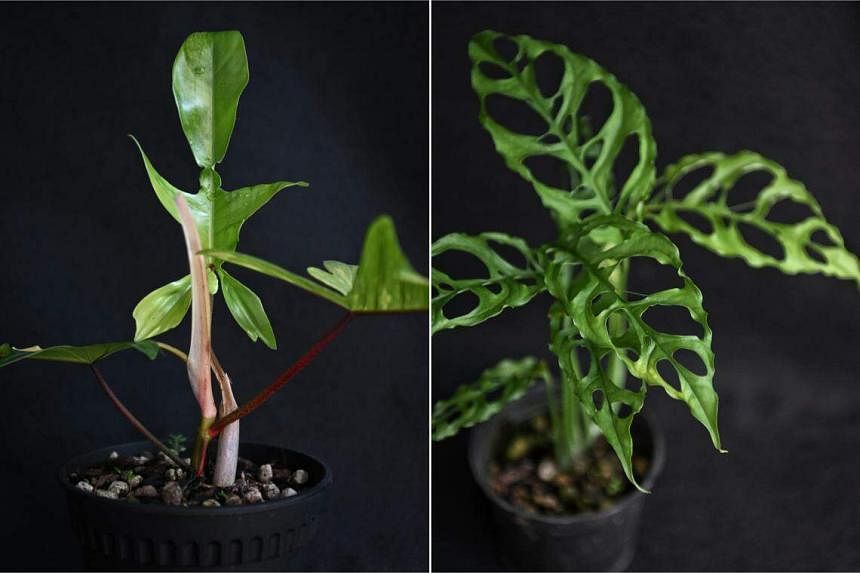
For example, a small Monstera obliqua Peru with about six leaves that once fetched up to $5,000 in 2021, the height of Covid-19, now goes for $98.
A Philodendron Florida Beauty plant with three leaves, which would have cost $600 two years ago, now sells for under $100.
Some plants, like the Philodendron Golden Dragon Variegated, saw such heightened demand during the “Great Covid-19 Gardening Craze” that they were priced per leaf cutting, at up to $8,000 a leaf. The asking price has plummeted to $450 a leaf.
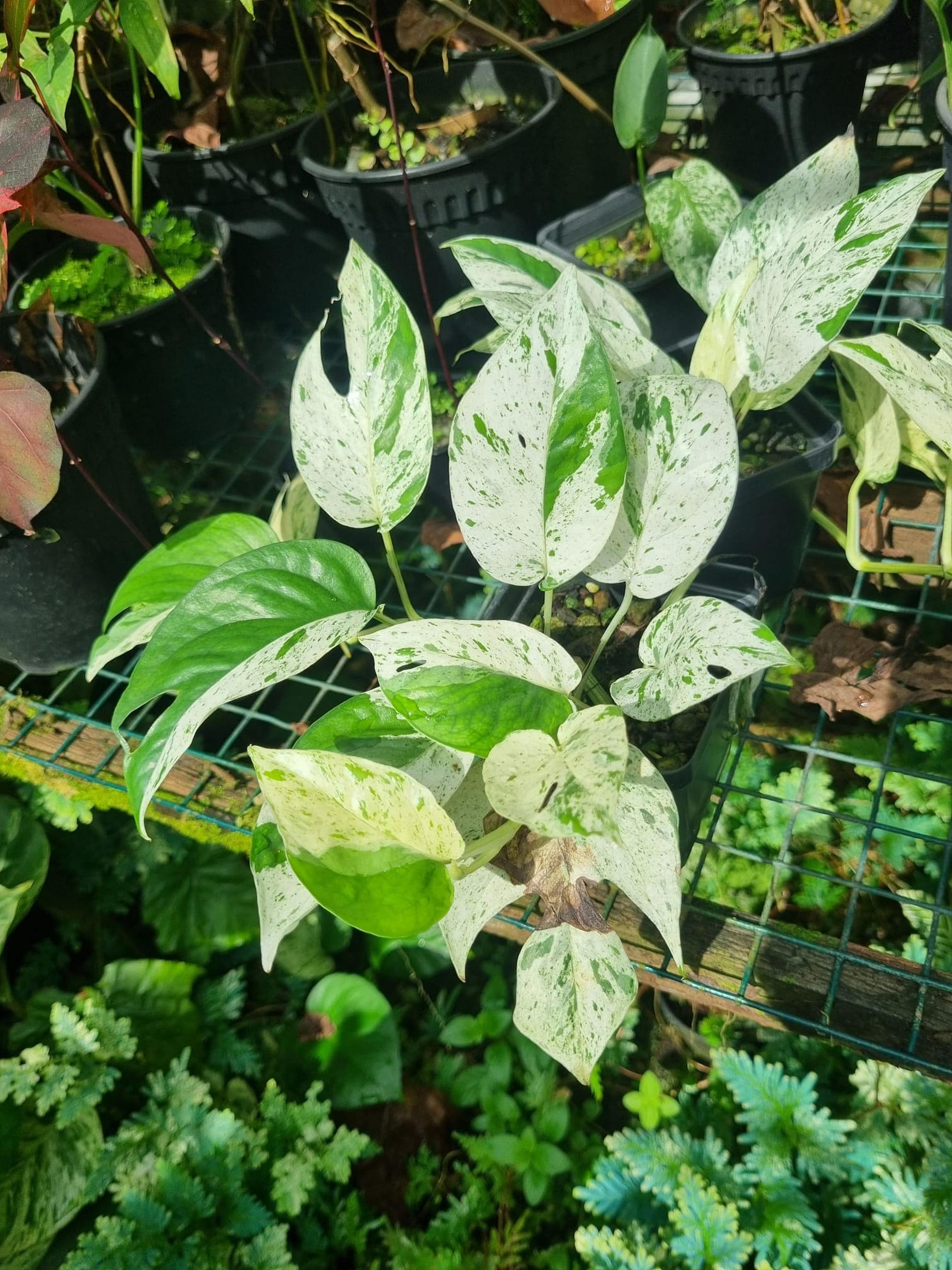
The Epipremnum Marble Plant, prized for its white fenestrated leaves, used to command up to $800 a leaf. An entire pot is now priced at under $100 at Terrascapes nursery in Choa Chu Kang.
Terrascapes’ co-owner Sandy Soh, 48, who has been in the plant industry for more than 10 years, says people were not very interested in aroids before the pandemic. He recalls it was possible to buy the sought-after Philodendron billietiae Variegated plant – known for its long, ribbed leaves – for $750 a plant up till 2019.
But after much of the world went into Covid-19 lockdown in 2020, the price surged to $3,000 to $4,000 a leaf. Terrascapes does not sell leaf cuttings, but Mr Soh says the current price is around $400 a leaf.
He blames social media for the upswing in popularity – and proliferation – of houseplants during Covid-19. The aroid craze was fed by the trend of people posting pictures of collectible plants on social media platforms such as Instagram.
“Somehow, your Instagram feed will show you what plants are trending,” he notes. “These Instagrammers may love their plants, but they also love the fame from posting.”
He, too, embraced social media and started selling plants online and making deliveries using Grab. But it was social media and online shopping that eventually played a part in the collapse of aroid prices.
“During Covid-19, many sellers started to pop up. Singaporeans are very entrepreneurial that way. They would buy plants and then sell cuttings. That inevitably crashed the market,” he says.
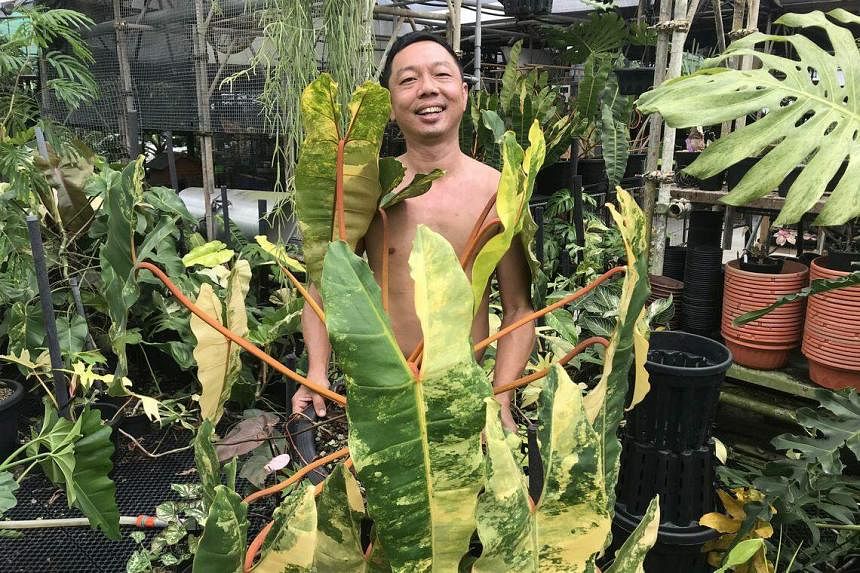
It was also easy to buy plants from nurseries overseas. Popular online sites include Chatuchak Market Plant on Facebook, which hails from Thailand; sindomall.com from Indonesia; and ecuagenera.com from Ecuador.
Like many others, Mr Soh started to propagate these popular plants, especially of the sought-after variegated variety. Variegated plants exhibit different colours or irregular patches or streaks.
“Aroids are not very difficult to propagate,” he says.
So did many other Covid-19-wave gardeners, who bought at high prices and sold cuttings to try to offset costs. However, what many new collectors did not know was that a plant grown from a variegated leaf cutting could revert to being a wholly green plant.
“These hobbyists were selling plants with no guarantee of variegation,” says Mr Soh.
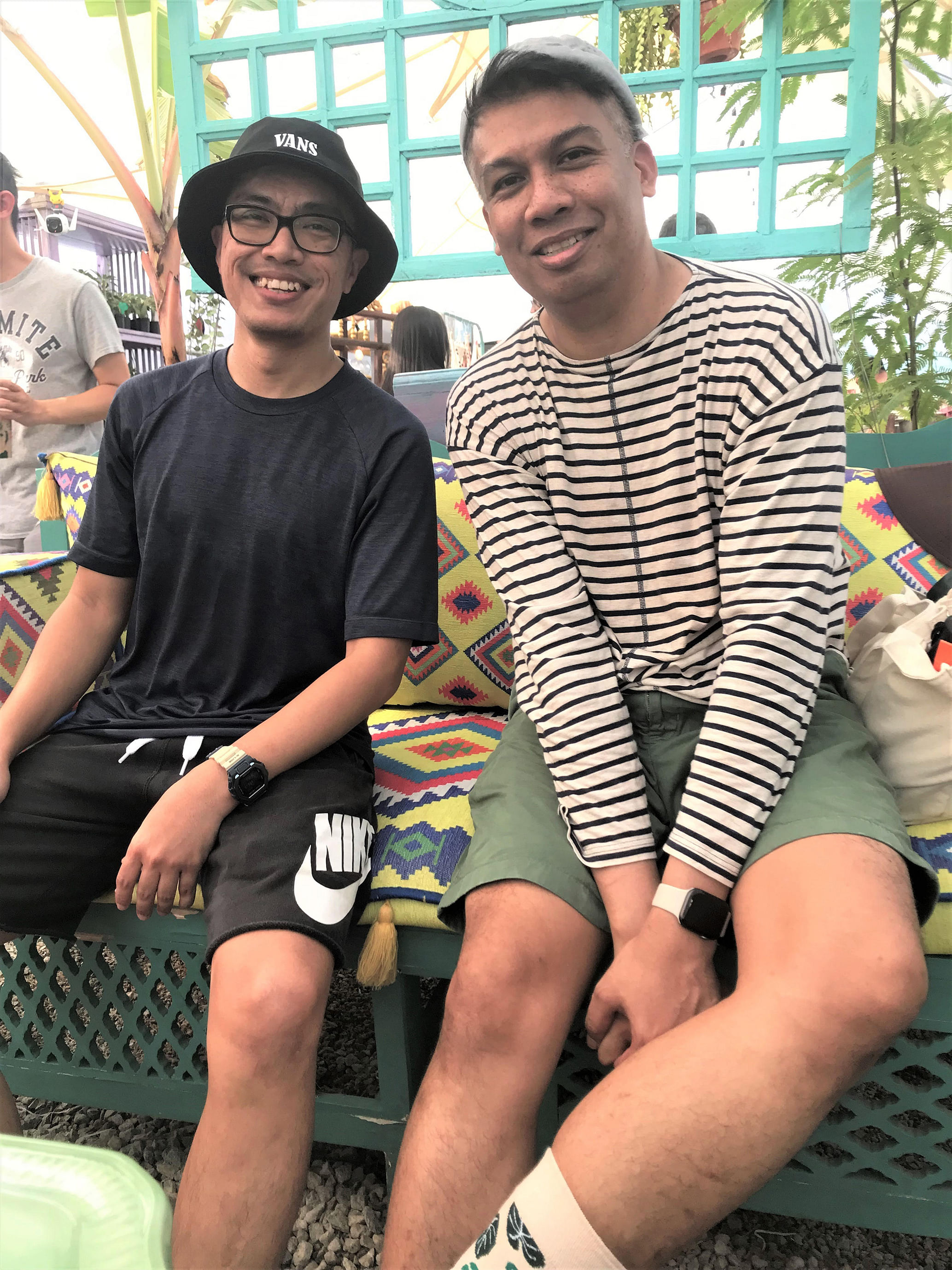
Others sold cuttings with little chance of growing up.
Mr Normizan Kasimin, who got into plant collecting during the circuit breaker period, remembers he bought a planted leaf cutting of a Monstera adansonii Albo from online consumer marketplace Carousell for $70 in February 2022. It died within a week.
The 41-year-old training specialist recounts that when he uprooted the dead plant, there were no roots. “When I contacted the seller, he said there was no refund,” he says.
Slow recovery
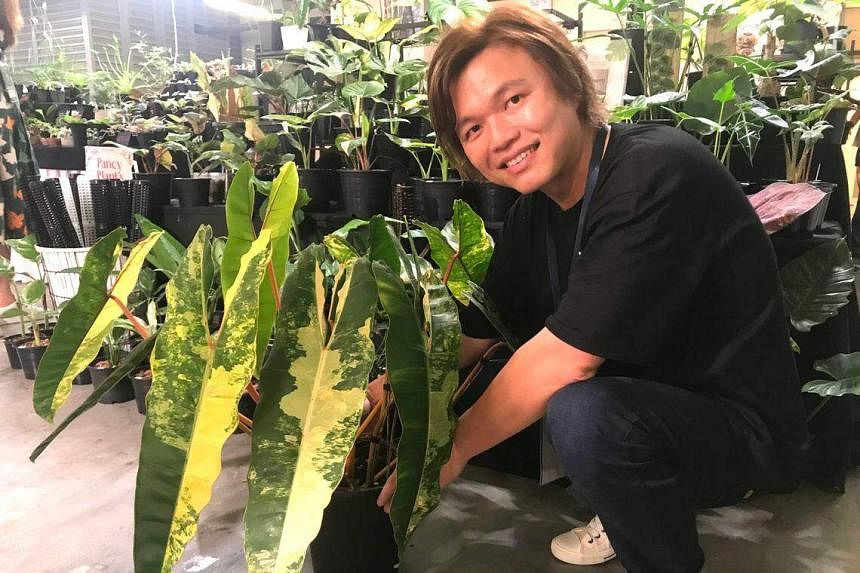
The impact of falling plant prices has hit nurseries hard. Businesses that The Straits Times spoke to estimate the average drop in revenue is between 20 and 50 per cent.
Mr Ng Yong Sheng, 41, who started Nursery 0312 in Seletar seven years ago and is the founder of the Facebook group Singapore Urban Gardening, says business was so good during Covid-19 that it paid for his daughter’s medical treatment, which cost five figures.
His daughter, who is nine years old, suffers from an autoimmune disease.
But everything went south once travel restrictions were lifted.
“Initially, it was bad,” he says, noting that hobbyists who started collecting during the Covid-19 period started selling off their plants to go back to work, depressing prices further.
Business has recovered in part, due to plant fair sales and events like the monthly Gardener’s Day Out at HortPark in Hyderabad Road, where workshops and bazaars attract hordes of hobbyist gardeners.
“Now, business is down by just 20 per cent to 30 per cent,” he says.
Some nurseries are hanging on and waiting it out.
Mr Ben Soh, 36, started his plant business, The Botanical Assembly, in Seletar in May 2021, as aroid fever was taking hold not just of Singapore but also the world over.
To get his business going, he bought about 50 plants to propagate, known in the industry as mother plants. They included variegated plants such as the Philodendron Strawberry Shake and the Monstera adansonii Albo, costing between $100 to four figures each.
“For some of the plants, the initial investment has not been made back yet. The strategy is to propagate more, especially the trending plants, and to spread the cost out, such that it becomes more price-friendly to the mass market.”
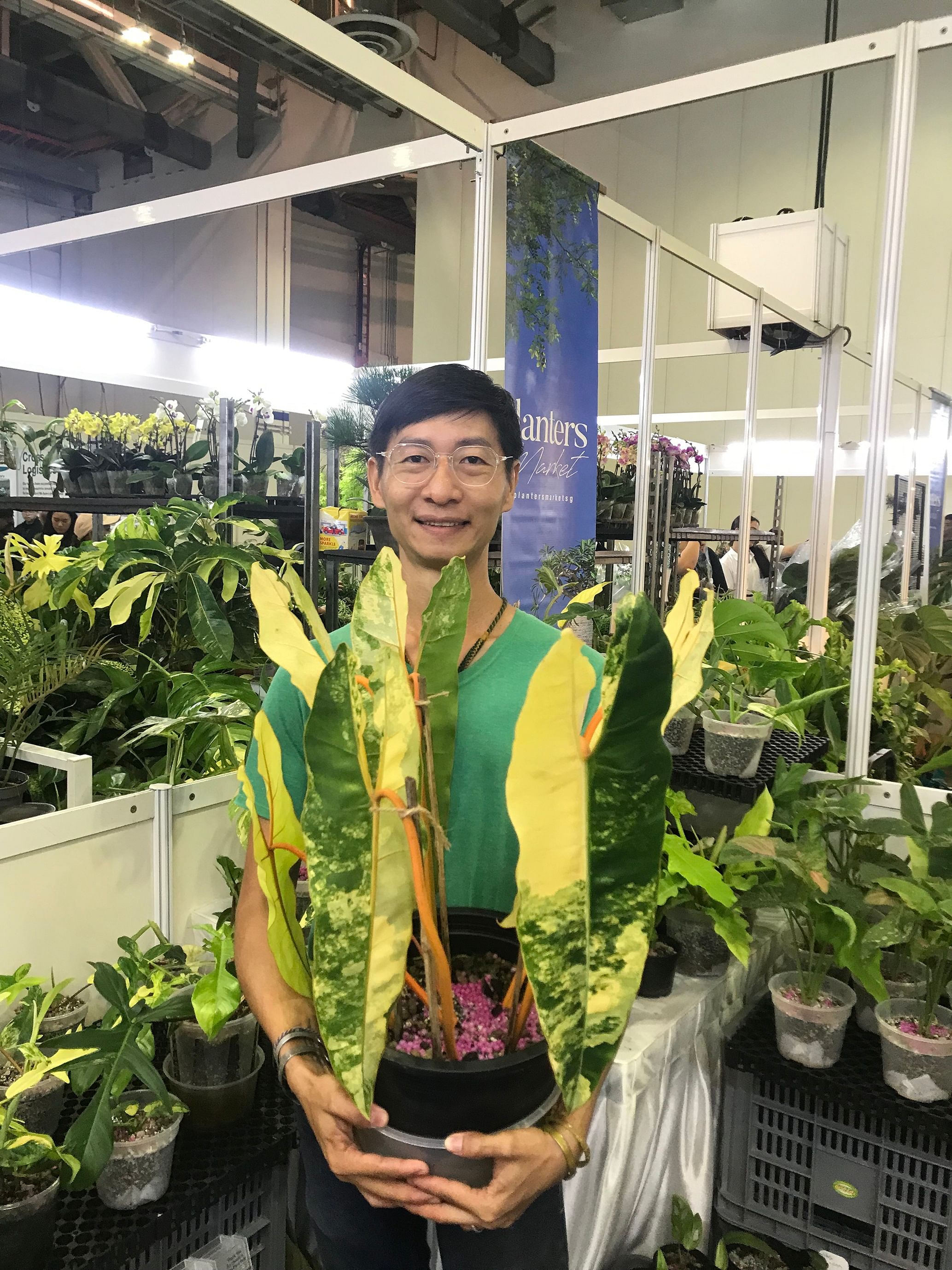
Likewise, Mr Tevin Lee, 43, who has been in the industry for four years and is the founder of two-year-old plant nursery ArtureSG in Tagore Lane, says: “At the peak, around 2021, I was selling 100 plants a day.”
Today, he says the market “is still hot, but the selling prices are lower”.
He is waiting for prices to drop further to attract a new breed of post-Covid-19 plant collectors.
In particular, he is closely watching the trend of tissue culture – which allows the propagation of plants to be done quickly and in large numbers -– and its impact on the prices of plants like the Philodendron joepii Variegated, which has unusual paddle-shaped leaves and used to sell for about $2,000 a leaf at its peak.
“I am waiting for the price to fall to $500,” he says.
A Philodendron joepii Variegated plantlet propagated from tissue culture currently sells for $400 to $500. When tissue culture becomes more accepted among aroid collectors, prices will likely fall further, he thinks. At the moment, a mature, 30cm-high plant costs about $9,000.
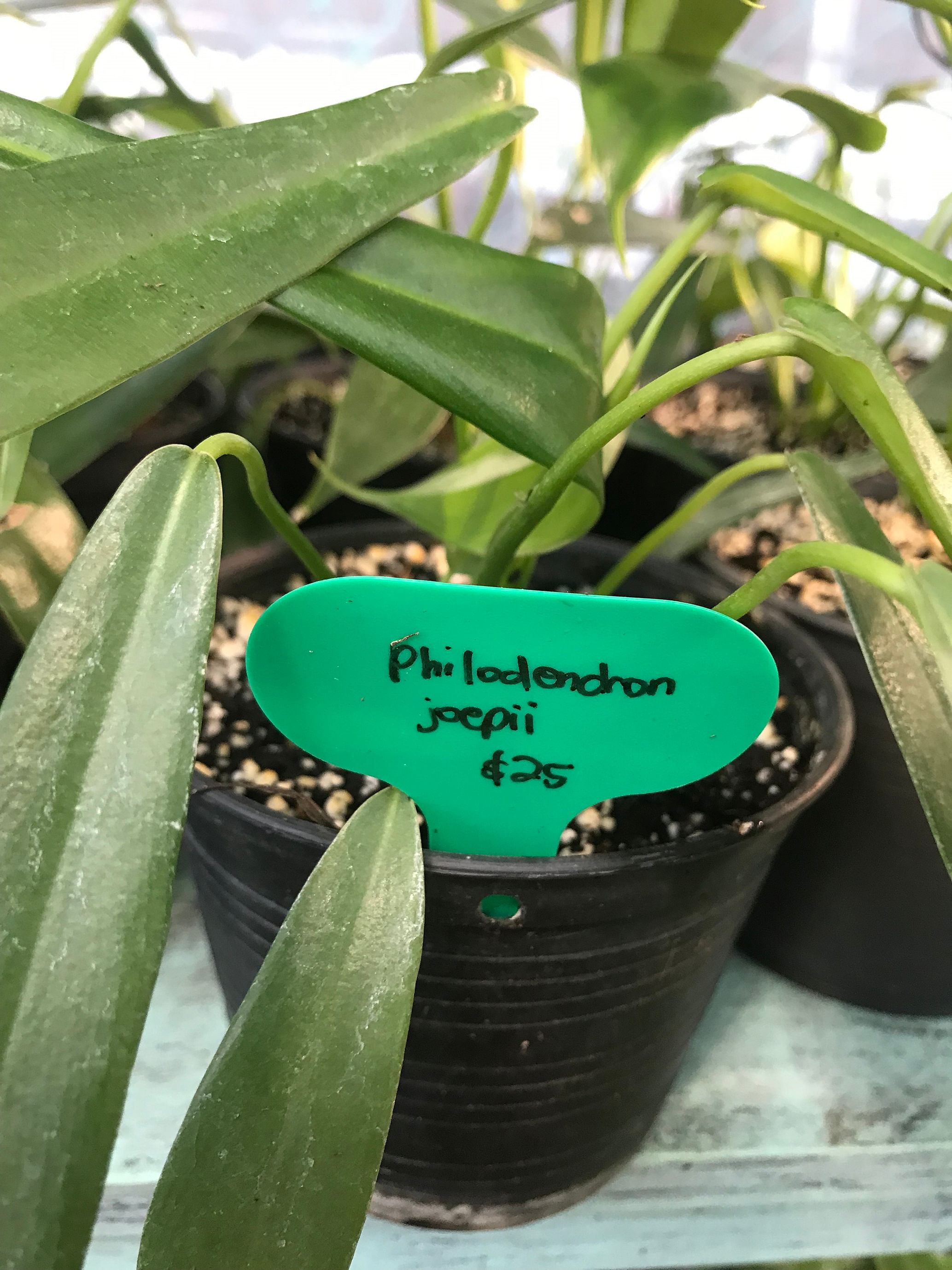
Rise of the clones
Many are avidly watching the implications of plant tissue culture.
According to Dr Wilson Wong, curator and deputy director of Jurong Lake Gardens, under the National Parks Board, it is a method that involves growing plant cells, tissues or organs in a laboratory under controlled conditions. Instead of soil or potting mix, it uses sterile liquid or semi-solid growing media with added nutrients to support plant growth.
“As there has been higher demand for these variegated versions of aroids since the Covid-19 period, suppliers and growers have been propagating more of these plants using tissue culture. Hence, these versions of aroids will become more common in time to come,” he says.
Some common examples of variegated and non-variegated plants being propagated by tissue culture include the top-dollar Monstera deliciosa, Monstera adansonii and Philodendron billietiae, which have unique, sought-after leaf shapes.
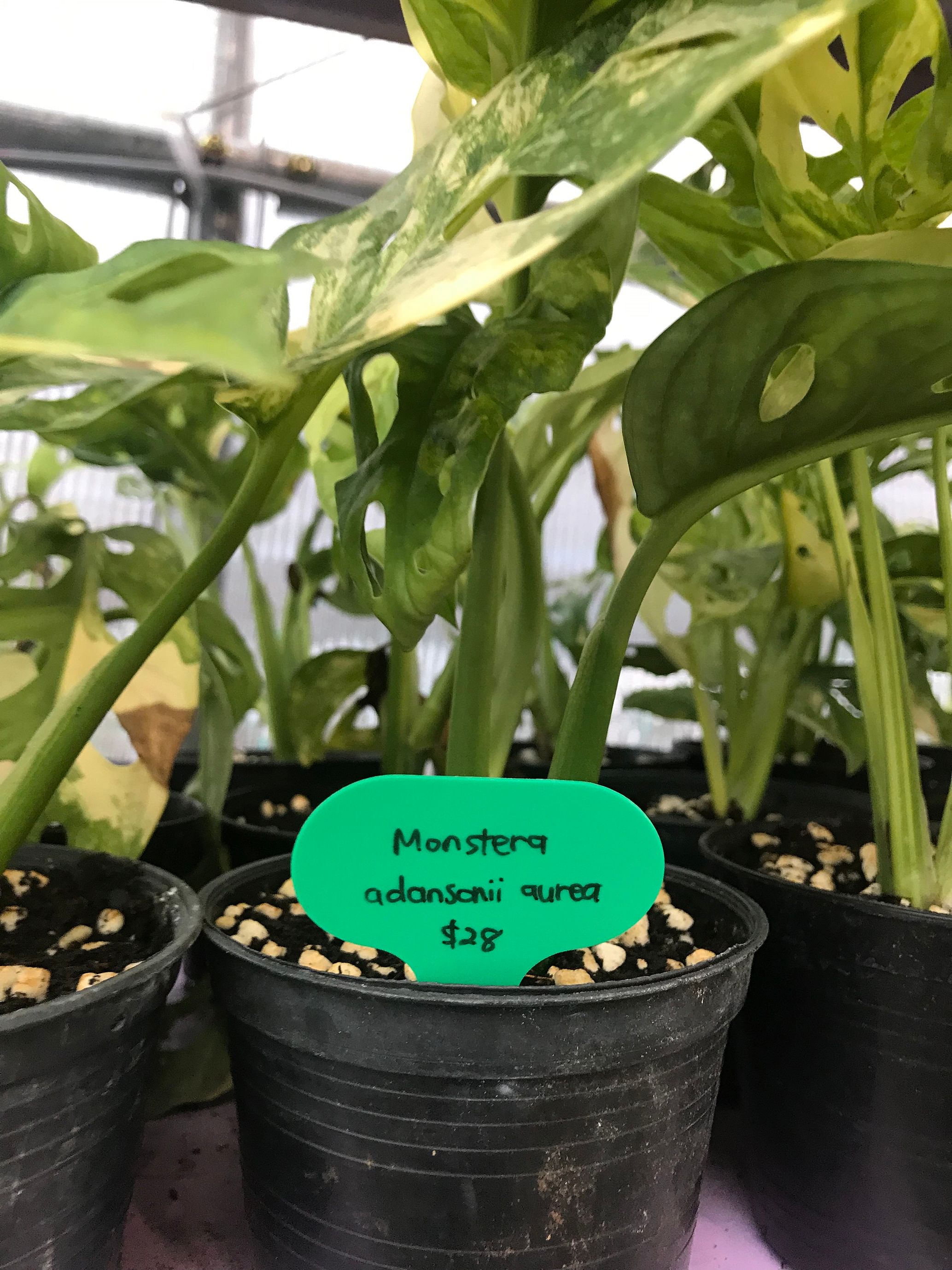
At Littlebotany nursery in Punggol, a small tissue-cultured Monstera adansonii Aurea sells for $28. Previously, a similar-sized plant would be priced between $800 and $1,200, says its owner Fendi Sani. Likened to Swiss cheese because of the fenestrated leaves, the starting price of a mature plant was about $4,000 in 2021.
Littlebotany started bringing in tissue-cultured plants from Thailand, including Dracaena trifasciata, or snake plants, as well as aroids in April 2019.
Mr Fendi, 34, who started Littlebotany 4½ years ago, says: “Most of my customers love tissue-cultured plants as they get the joy of growing them from a wee, tiny baby. It also makes the hobby affordable.”
Mr Alvin Tan, 39, of Local Loco, an online plant retailer, has started to sell tissue-cultured aroids recently. Previously, they were available only in very few varieties and small quantities, but the range available in Thailand exploded early in 2023.
He brought in several batches in sterile glass vials, selling them at plant fairs and online for between $90 and $200. The star draws are variegated ones.
He notes that tissue-cultured plantlets have to be treated with care, as they are grown in a sterile environment to ensure the highest chances of survival and reduce the possibility of infection.
He sells only plantlets that are stable and ready to be acclimatised by buyers.
“Typically, this process involves de-flasking the plantlets with a pair of tweezers, removing the nutrient gel from their roots, and then potting them in a medium suitable for growing aroids. Thereafter, the plantlets will require higher humidity, so we recommend that they be kept in a humidity chamber before being slowly introduced to the outside environment,” he says.
He acknowledges that many feel that tissue-cultured plants are not “real” plants.
But, he counters: “Horticulture is also about science. And with this constantly changing demand for ornamental plants, it is inevitable that technology will be utilised to speed up growing processes, reduce mortality rates and pare down costs.”
A buyer’s market
While tissue-culture has lowered prices of rare, variegated plants, not all collectors are receptive to them.
“I may be biased or misinformed, but I do feel there is a difference,” says housewife Maggie Lim, 54, a gardener of over 15 years.
While she did spend a four-figure sum for a Homalomena rubescens Yellow Sapphire in early 2022, she has since moderated her budget to around $200.
She is waiting for plant prices to drop further before adding new babies to her collection. On her wish list is a Philodendron billietiae Variegated, which she hopes to score for no more than $300 for a three-leaf rooted cutting. She also hopes to get a Homalomena Pink Diamond for below $200, a fraction of its Covid-19-period prices.
It is a buyer’s market now. She relates how she recently bought an Anthurium vittarifolium, which has striking, sword-like leaves, on Facebook for $60, after the price was slashed from $280 the previous month. The seller had to leave the country for work.
Another collector, Mr Jasment Wong, 50, has started to import different types of anthuriums from overseas sellers for better prices.
“Sometimes, I will import five plants and sell two to cover my costs. To import just one plant is not worth it,” says the design consultant. An Anthurium dressleri two-leaf seedling bought 1½ years ago cost him $2,000 including shipping and agent fees.
He has spent five-figure sums on plants, including $10,000 for a two-leaf Philodendron spiritus sancti plant, which has leaves shaped like an elongated heart.
He has also started selling his anthurium seedlings at plant fairs from plants that he pollinated and germinated himself to create his own hybrids, and plans to register his favourites with the International Aroid Society.
Accepting his losses, he says: “I will never recover the cost for my big plants.”
But other collectors have stepped back from collecting since going back to the office and getting on with life.
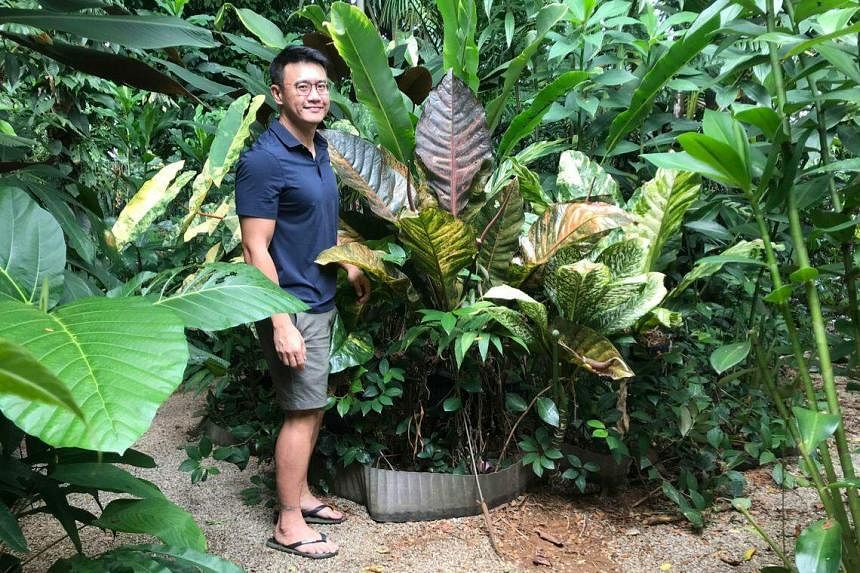
Lawyer Russel Low has been a collector for around 20 years, starting with rare ginger plants that he imported from the United States. His collection also includes bromeliads, succulents, cycads and rare trees like the Dracaena cinnabari, better known as the Dragon’s Blood Tree.
He started collecting aroids in 2019. The 48-year-old recalls the excitement of bidding for plants on live streams hosted by online sellers.
“It was all about having the fastest fingers and a lot of patience since some of these live streams can go on for hours,” he says.
Despite prices tumbling, he has stopped buying plants that were once on his wish list.
“I am focusing on just growing what I have,” he says.
“The fire has definitely died down, and I know of quite a few people who have quit the hobby due to plant fatigue. For me, I am caught up with travelling for work or leisure, or catching up with my other interests,” adds the fitness enthusiast, who does callisthenics and high-intensity interval training about six times a week. He recently adopted a fourth rescue dog and has added two Japanese Bantam chickens to his coop.
He still tends to his plant collection, but spends only about two to three hours a week, compared with 10 to 12 hours during the Covid-19 period.
He was recently quoted a four-figure price for a seedling of a rare tree he once hankered after.
“In the end, I decided against getting it. It feels like the pre-Covid-19 days when anything more than $200 for a plant is considered expensive,” he says.
James Zabiela – The Healing
Deep Dish – Say Hello
“Say Hello” is a song by American electronic music duo Deep Dish. It was originally included on the group’s 2005 album, George Is On, and was released as a single on July 4, 2005. The song’s vocals were provided by Anousheh Khalili.
“Say Hello” became another popular hit for the group, topping the US Billboard Hot Dance Club Play chart and peaking at number 14 on the UK Singles Chart. In Finland, it reached number four to become the band’s first of three top-10 singles.
What is Somatics?

By Thomas Hanna, Ph.D.
THE DISTINCTION BETWEEN SOMA AND BODY
Somatics is the field which studies the soma: namely, the body perceived from within by first-person perception. When a human being is observed from the outside, i.e. from a third-person viewpoint, the phenomenon of a human body is perceived. But when this same human being is observed from the first-person viewpoint of his own proprioceptive senses, a categorically different phenomenon is perceived: the human soma.
The two distinct viewpoints for observing a human being are built into the very nature of human observation which is equally capable of being internally self-aware as well as externally aware. The soma, being internally perceived, is categorically distinct from a body, not because the subject is different but because the mode of viewpoint is different: It is immediate proprioception—a sensory mode that provides unique data.
It is fundamental to recognize that the same individual is categorically different when viewed from a first-person perception than is the case when he is viewed from a third-person perception. The sensory access is categorically different as are the resultant observations.
The categorical distinction between these 2 viewpoints establishes the ground rules for all studies of the human species. Failure to recognize the categorical difference between first-person observation and third-person observation leads to fundamental misunderstandings in physiology, psychology, and medicine.
Physiology, for example, takes a third-person view of the human being and sees a body. This body is an objective entity, observable, analyzable and measurable in the same way as any other object. The universal laws of physics and chemistry are brought to bear on this body, because, as an observed body, it richly displays universal physical and chemical principles.
From a first-person viewpoint, however, quite different data are observed. The proprioceptive centers communicate and continually feed-back a rich display of somatic information which is immediately self-observed as a process that is both unified and ongoing. Somatic data do not need, first, to be mediated and interpreted through a set of universal laws to become factual. First-person observation of the soma is immediately factual. Third-person observation, in contrast, can become factual only by mediation through a set of principles.
It should be understood that this difference in data is neither a difference in truthful accuracy nor of intrinsic value. The difference is that two separate modes of cognition are irreducible. Neither mode is less factual or inferior to the other; they are coequal.
Psychology, for example, takes a third-person view of the human being and sees a body of behavior. This bodily behavior is an objective datum that is observable, analyzable, and measurable—as is any other behavioral datum. The universal laws of cause and effect, stimulus and response, and adaptation are brought to bear on the behaving body, because, as an observed body, it richly displays these behavioral principles.
But, from a first-person viewpoint, quite different data are observed. The proprioceptive centers communicate and feed-back immediate factual information on the process of the ongoing, unified soma—with the momentum of its past, along with the intentions and expectations of its future. These data are already unified: they have no need to be analyzed, interpreted, and later formulated into a unitary factual statement.
Medicine, for example, takes a third-person view of the human being and sees a patient (i.e. a clinical body) displaying various symptoms that – when observed, analyzed, and interpreted according to universally known clinical principles – can be diagnosed, treated and prognosed.
But, from a first-person viewpoint, quite different data are observed. The proprioceptive centers communicate and feed-back immediate factual information on the continuous and unified past of the soma and its expectations for the future. The somatic appreciation of how this past led to ill health and how the future may restore – or not restore – health is essential to the full clinical picture. Ignorance of the first-person viewpoint is ignorance of the somatic factor that permeated medicine; the placebo effect and the nocebo effect.
The human being is quite unlike a mineral or a chemical solution in providing, not one, but two irreducible viewpoints for observation. A third-person viewpoint can only observe a human body. A first-person viewpoint can only observe a human soma – one’s own. Body and soma are coequal in reality and value, but they are categorically distinct as observed phenomena.
Somatics, then, is a field of study dealing with somatic phenomena: i.e. the human being as experienced by himself from the inside.
Reprinted from Somatics, Vol. V, No. 4, Spring/Summer, 1986
Tony Anderson – Éclosion
“Éclosion” was the first single from Tony’s forthcoming album, “Nuit”, released in 2021. Tony says: “As it was coming to life, Éclosion reminded me that the most beautiful, tender and delicate things can grow even in the darkest places. It is my gift to you in whatever season you find yourself.”
The translation, from French, is “to come alive,” “to bloom,” or “to hatch.” Éclosion is a reminder to Tony that beautiful, tender things can grow in the midst of a difficult time. I feel these things growing inside of me, and I know they are growing inside of you, too.
Adam Ten & Yamagucci – The Girl Next Door
When you’ve completed the main mission and have time to do a side gig.